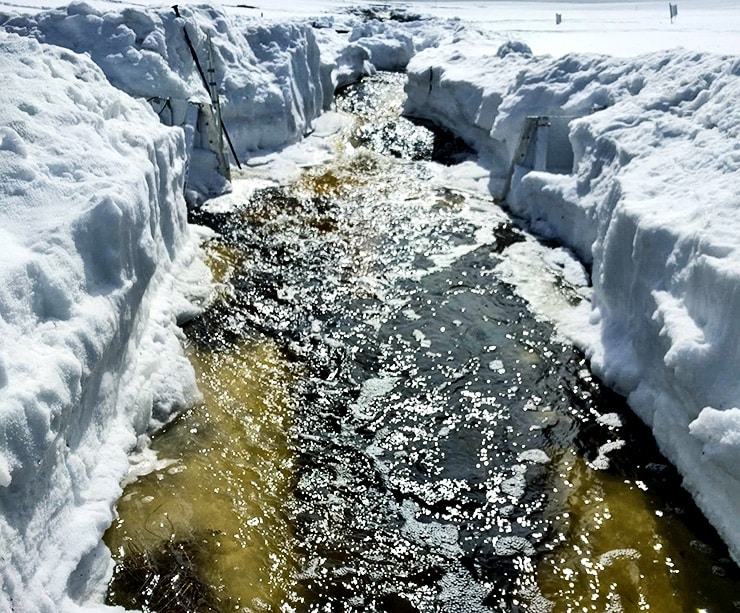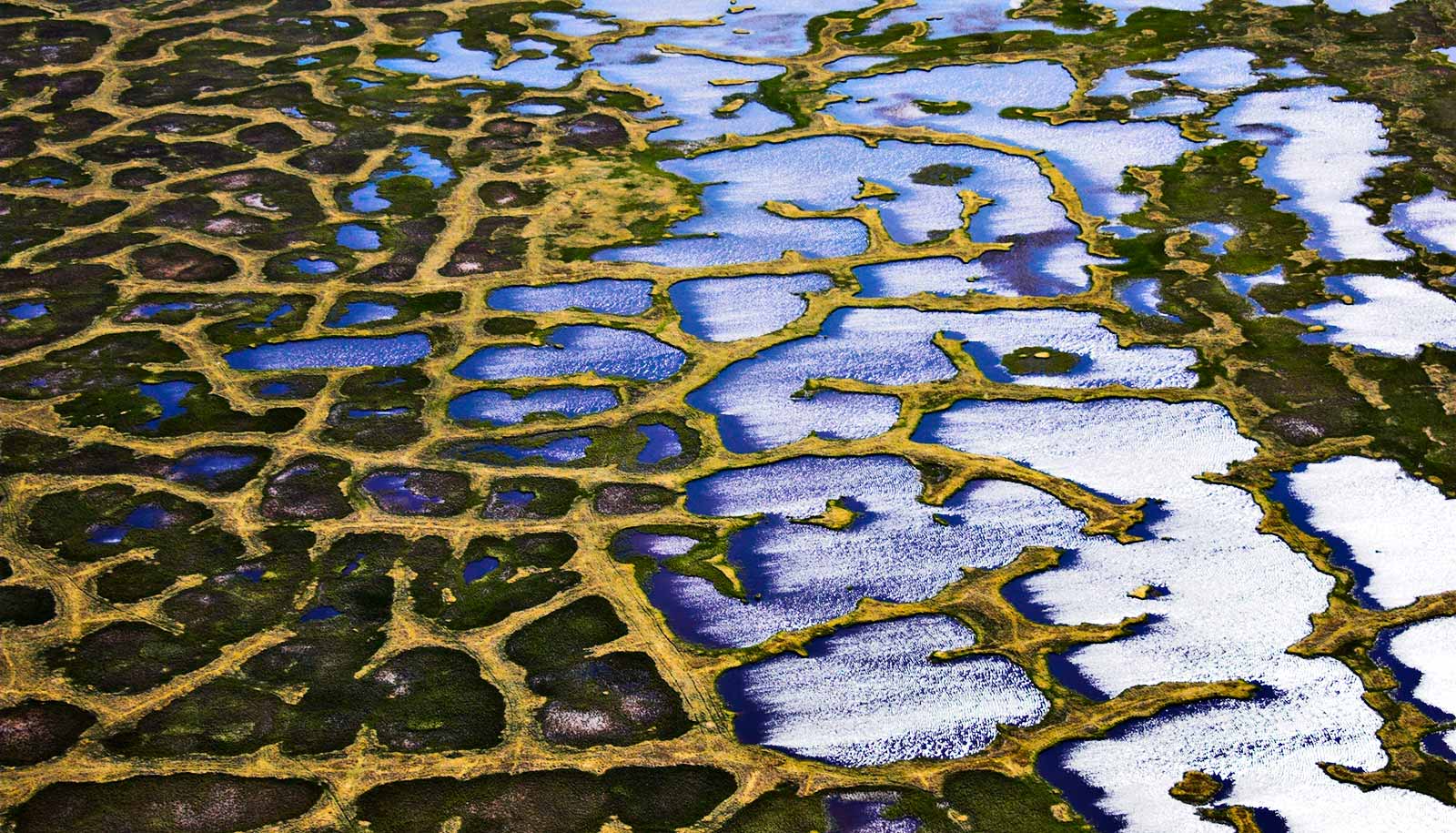Microbes in permafrost that eat sun-weakened carbon and convert it into carbon dioxide may be providing a major pathway for the greenhouse gas to enter the atmosphere, new research suggests.
Researchers had known that sunlight beaming down on permanently frozen soil, or permafrost, in the Arctic breaks down carbon in that permafrost and releases the greenhouse gas into the atmosphere, but they didn’t know how the process was occurring.
Previously, Collin Ward, a recent doctoral student at University of Michigan and first author of the study, showed microbial communities in the deep permafrost can rapidly adapt to consume sun-weakened carbon. Permafrost soil, typically buried underground, can be exposed to sunlight once thawed and flushed to a stream where sunlight exposure weakens the carbon within that permafrost, converting it into carbon that those microbial communities like to consume.

The new study shows that sunlight makes permafrost soil a feast for microbes because it gives them the same kinds of carbon they already like to eat—the carbon they are adapted to metabolize.
As more of the permafrost thaws—the Arctic is warming at a rate two times faster than the rest of the world—it has the capacity to release an incredible amount of carbon as carbon dioxide into the atmosphere. If all of the carbon held in permafrost was converted into carbon dioxide, it would more than double the amount of carbon in the atmosphere. Very few models that predict climate scenarios for the future include these carbon emissions from permafrost, says Rose Cory, an associate professor of earth and environmental sciences.
“It’s the difference between eating at a buffet with a ton of choices and some not very good options versus being at a buffet where every dish is your favorite,” she says. “Sunlight turns some permafrost soil carbon into microbe ‘favorites,’ which helps them convert more of this carbon into carbon dioxide.”

Permafrost in the Arctic can’t be decomposed by microbes until it warms and thaws. Once it does, native microbial communities start decomposing this soil carbon, slowly eating it and, in the process, turning it into carbon dioxide.
Not all decomposition of soil carbon happens in the soil though. Snow and rain during the summer flush out soil carbon into sunlit streams and lakes, where the sun weakens the soil carbon. Previous research showed that microbes were much better able to convert sun-weakened carbon into carbon dioxide, but they didn’t know why.
To determine how sunlight was aiding the production of carbon dioxide, Cory and her team subjected soil samples to ultra-high-resolution mass spectrometry before and after being exposed to sunlight, and before and after feeding that organic matter to the native bacterial community. They saw that the bacterial communities were causing more carbon dioxide to release in the permafrost soil samples that had been exposed to sunlight.
They checked their results against another method: examining microbial community composition and gene expression by the microbes. The researchers saw that after sunlight exposure, microbes retooled their metabolic machinery to consume sun-weakened carbon.
Are estimates of our ‘carbon budget’ wrong?
Figuring out how sunlight contributes to the release of carbon dioxide from Earth into the atmosphere gives researchers one more piece of information about how to determine the rate and amount of carbon dioxide released by permafrost.
“It’s arguably the largest feedback method to cause more warming on Earth,” Cory says. “We’re in a race to figure out how much this permafrost is going to be converted into carbon dioxide.”
The researchers report their work in the journal Nature Communications.
Source: University of Michigan



